Despite his mythic handicap, Ivar the Boneless was the most fearsome Viking of his time and conquered England with his heathen army.
Ivar the Boneless was one of the most feared Vikings in history — and he couldn’t even stand without somebody holding him up. In Viking tradition, someone like him would’ve been killed at birth, but Ivar was protected because he was the son of a powerful chief.
His body was so frail that he had to be carried on a shield when he went into battle, but his mind was one of the sharpest around.
This was the man who led the Great Viking Heathen Army on its conquest of England. In the late 9th century under Ivar, the Vikings terrorized the nation and conquered everything from Essex to Dublin. Ivar ushered in an era of Viking domination over Britain that wouldn’t end until long after his death.
And, as legend has it, he didn’t have a single bone in his body.
Who Was The Real Ivar The Boneless?

Wikimedia CommonsA facial reconstruction of a Viking believed by some historians to be Ivar the Boneless.
Today, most people know Ivar the Boneless from the History Channel show Vikings, but that character’s almost entirely the product of a screenwriter’s imagination. Other than being a Viking who couldn’t walk, almost nothing in the show lines up with the actual history of the real Ivar.
The truth, though, is a bit tricky to ascertain. The only information we have on Ivar Ragnarsson, or the Boneless as he’s come to be known, comes from either the British he terrorized or the Vikings who loved him. In the British sources, he’s presented as a pagan demon sent from hell; in the Viking ones, he’s a living god with supernatural powers.
According to Norse legends, as his name suggests, Ivar the Boneless was born “without any bones at all.” His mother Aslaug was a shaman, and his father, Ragnar Lothbrok, was a famed warlord chieftain. Upon their marriage, Aslaug warned Ragnar that if he didn’t wait three nights before making love to her, their child would come out deformed.
Ignoring the warning, Ragnar forced himself on her and Ivar the Boneless was born.
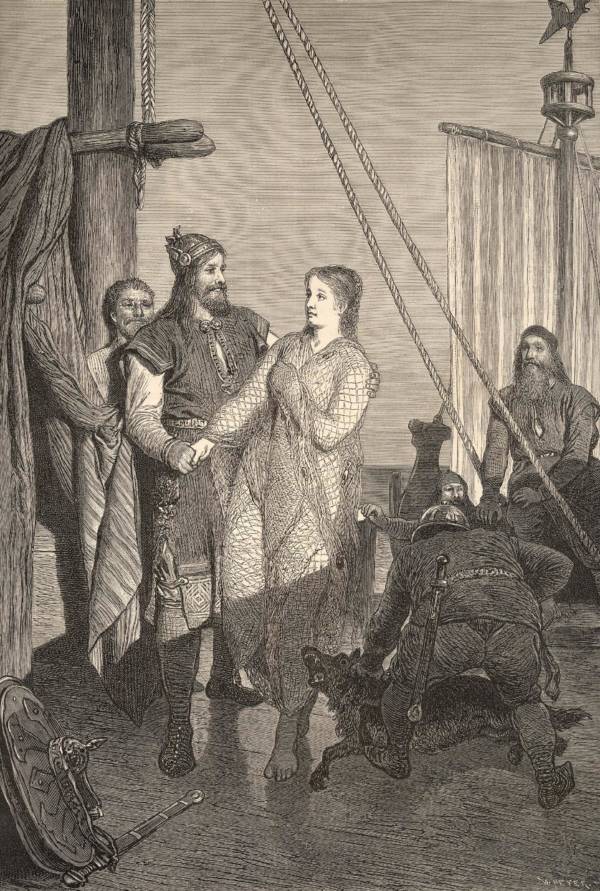
Wilhelm Meyer / Wikimedia Commons Depiction of Ivar the Boneless’s parents, Ragnar Lothbrok and Aslaug.
Viking sagas have described him as “Only cartilage was where bone should have been, but otherwise, he grew tall and handsome and in wisdom, he was the best of their children.”
Considering that having no bones would make it pretty difficult to stay alive, it’s obvious that the historic record on Ivar is a bit exaggerated. Having said that, modern historians have some interesting theories as to why he was so named.
Most seem to think he had a condition called osteogenesis imperfecta which leaves sufferers with fragile, glass-like bones. There’s another possibility, though.
The Vikings also described him as massive. Records from the 17th-century claim that a farmer found Ivar’s remains and that he was nine feet tall. The bones he found have been lost since then, but if it were so, Ivar would’ve been as tall as Robert Wadlow, the tallest man in history, who needed leg braces to stand.
Ivar was also known to be ferocious in battle and his supposed girth suggested that he was likely physically flexible, like double-jointed, so much so that he could have been considered without any bones at all.
Another less flattering explanation for his nickname could have been the fact that he died childless and loveless. He was referred to by contemporaries as having “no love lust in him.” He could, in that sense, have been “boneless.”
The Great Heathen Army Of Ivar Ragnarsson
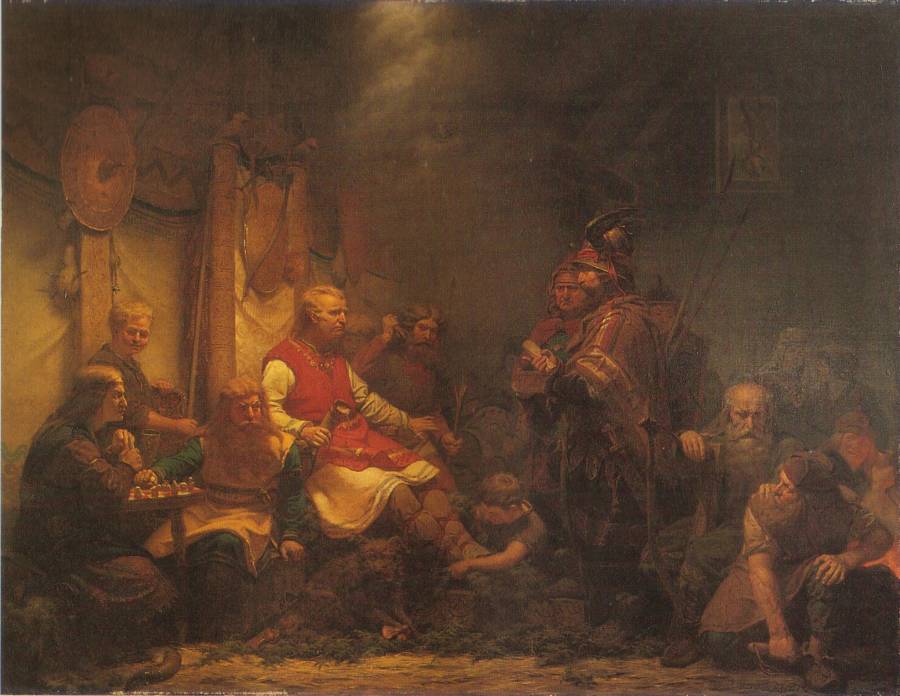
August Malmstrom/Wikimedia CommonsÆlla of Northumbria tells Ivar the Boneless how he killed his father.
Unlike his portrayal in the TV show Vikings, Ivar didn’t fight with his brothers and definitely didn’t kill one of them. He was deeply dedicated to his family and they, in turn, respected him. In fact, when their father Ragnar Lothbrok died, Ivar’s brothers turned to him to lead the way.
His father’s death was a key moment in Ivar’s life because of the circumstances. Ragnar Lothbrok was captured by king Ælla of the medieval English kingdom Northumbria and thrown into a pit of poisonous vipers during a raid on the north-eastern shores of England.
When word reached his sons, Ivar demanded to be told every detail of how his father died. He wanted to be completely enveloped in hatred before exacting his revenge.
Ivar decided to form what the English would dub the “Great Heathen Army” and go to war with Northumbria. Ivar was the mastermind behind the army’s tactics, “It is doubtful if anyone has ever been wiser than he,” his contemporaries wrote of him.
If Ivar Ragnarsson truly was unable to walk, then he relied more on his mind instead of his body to lead his Norse warriors. According to the Vikings, though, Ivar the Boneless would still fight with them in the vanguard as a show of courage lofted on a shield even though his body was practically useless.
Norse legend says their first battle with Northumbria ended with Ælla and Ivar making a deal. Ivar promised to stop raiding as long as he could claim as much land as he could cover with an ox’s hide. Ælla agreed, and then Ivar cut an ox hide into such fine strands that he managed to cover the entire fortress at York, which was the capital of Northumbria.
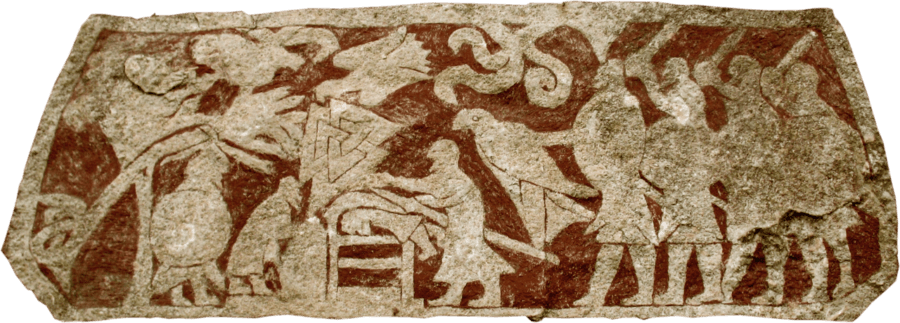
Wikimedia CommonsAn ancient Viking engraving showing a Blood Eagle.
That probably didn’t happen, but there’s no question that Ivar conquered the city. There, he captured Ælla and made him pay in the most brutal way imaginable if the other legend is any truer. The Vikings called it the “Blood Eagle“. They ripped open Ælla’s ribcage from behind and pulled his lungs out into the shape of wings. Then, to make it as painful as possible, they sprinkled salt into his bloody wounds.
Ivar The Boneless Conquers England
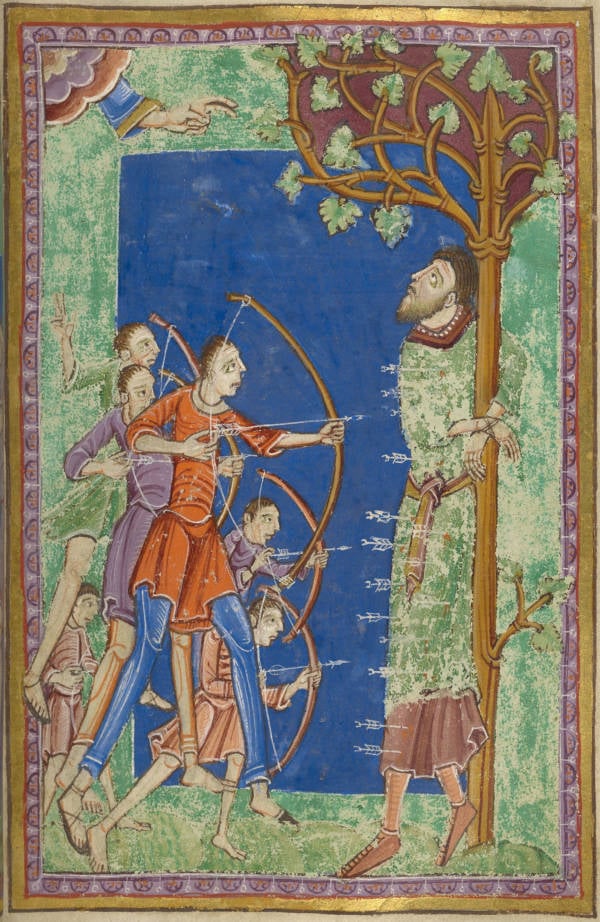
The Morgan Library & Museum / Wikimedia CommonsThe death of Edmund the Martyr, as painted by medieval monks.
Ivar the Boneless didn’t stop with Ælla’s death and the capture of Northumbria. Instead, he turned his sights on the rest of England.
“The army raided here and there and filled every place with bloodshed and sorrow,” the English writer Simeon of Durham wrote of Ivar Ragnarsson’s reign of terror. “Far and wide it destroyed the churches and monasteries with fire and sword. When it departed from a place it left nothing standing but roofless walls.”
The hardest target was the kingdom of Mercia. At the time, it was the strength of England—its greatest kingdom. The Great Heathen Army set up a base near the Mercian city of Nottingham and spent more than a year attacking and withdrawing from it—but in the end, the broke through its walls and slaughtered the people inside.
With Mercia falling under their rule, the rest of England could barely stand against the Viking army. They marched on, making martyrs out of the men they slaughtered.
Ivar the Boneless famously put King Edmund of East Anglia through such a long and horrible death that, when he was through with him, the Christians sainted him “Edmund the Martyr.” Ivar had him brutally beaten with clubs, bound up in iron chains, tied to a tree, and filled full of arrows until he looked like a porcupine.
Only then did he allow him to die; Edmund’s head was chopped off and thrown into the brambles.
The Death of A Brutal Warlord
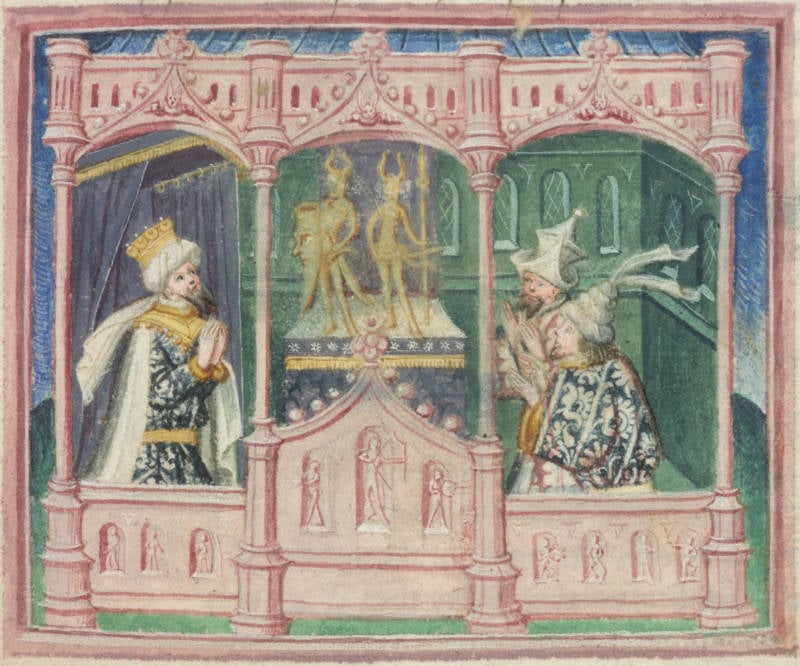
British Library/Wikimedia CommonsMedieval art depicts Ragnar Lothbrok and his sons worshipping pagan idols.
By 870 AD, Ivar Ragnarsson’s dominion over Britain stretched all the way to Dublin. But then seemingly out of nowhere in 873, he died. The most likely explanation is whatever sickness kept Ivar’s bones so weak finally claimed his life.
The only information we have comes from a book called the Annals of Ireland. “The Norwegian king…died of a sudden hideous disease,” it read. “Thus it pleased God.” As expected, they were pretty happy about the foreign warlord’s passing.
Legend has it Ivar asked to be buried in a place that was exposed to attack. As long as his body was buried there, he promised his men, no one would be able to defeat them.
But archaeologists recently uncovered a burial ground that they think belongs to Ivar the Boneless, and it paints a very different end to his story. The grave they found belongs to a respected Viking, draped in a necklace bearing Thor’s hammer and clutching a Viking sword.
He is surrounded by the bodies of 248 of his men, including dead children who were ritualistically killed to accompany him to Valhalla. If this is Ivar, then his death wasn’t so peaceful. The skeleton in the center of the mound was disemboweled before he died and his genitals were cut off.
But as legend held, history seems to suggest that Ivar Ragnarsson’s prophetic promise to his men came true. Nobody could chase his Viking army out of Dublin until William I of England dug up Ivar’s corpse and burned it to ashes on a pyre.
After this look at Ivar Ragnarsson, better known as Ivar the boneless, learn more about the misunderstood Vikings and the incredible shieldmaidens who joined them in battle.





